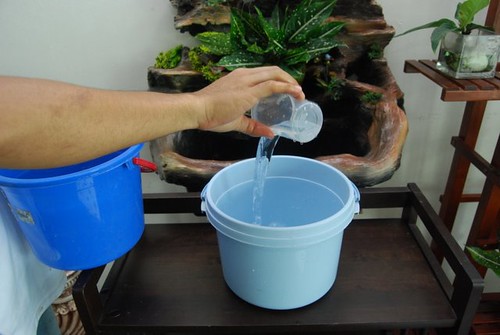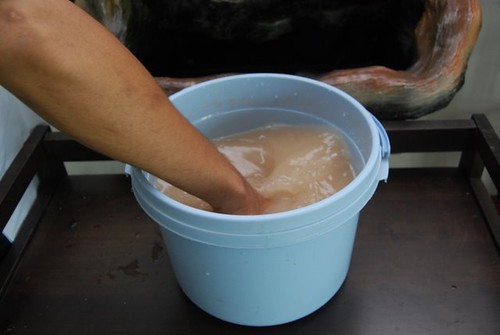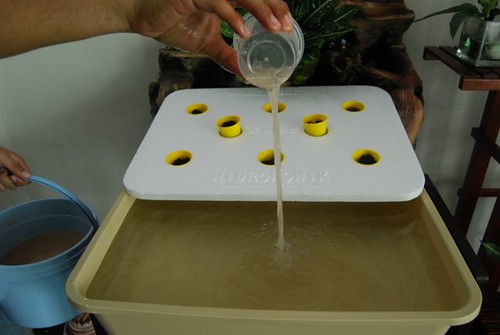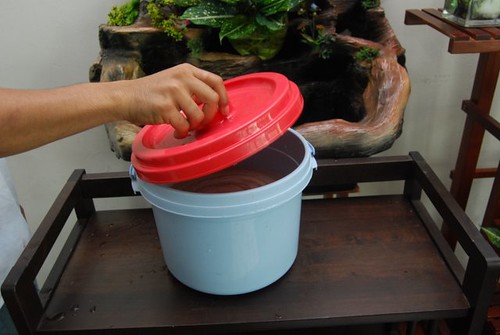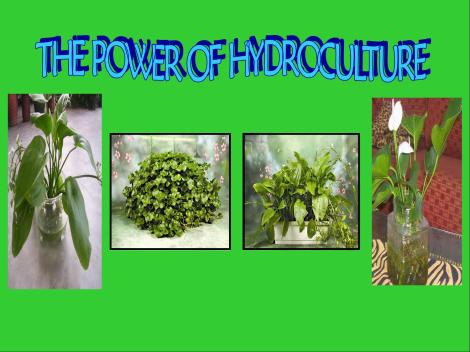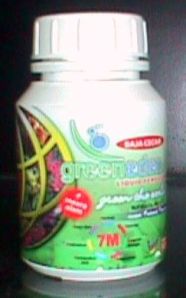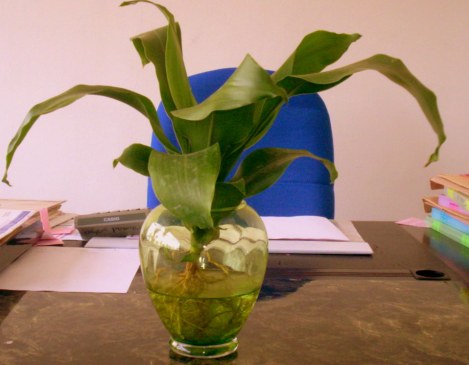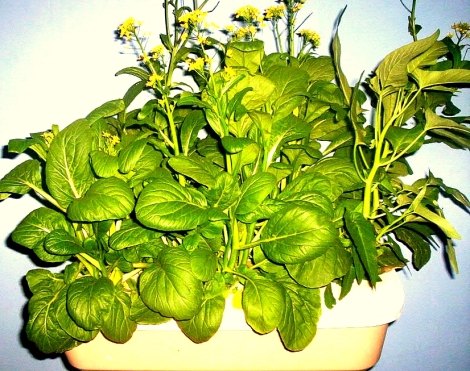WHAT IS HYDROCULTURE ?
Hydroculture (sometimes called hydroponic-culture or hydro-culture), is a system of cultivation of plants without the use of soil but it is the low-end of growing plants in water. It was particularly used for indoor tropical houseplants or plants used in office or home interiorscape. Hydroculture is easy to care and maintain, compared to plants grown in soil. At the same time it guaranteeing a thriving and healthy growth of the plants plus, it was superior than those plants cultivated in soil. This is because growing in a hydroculture gives it an excellent setting for plant development.
The term hydroculture is restricted to hydroponics as applied to ornamental plants. It has been used widely as the preferred method for growing tropical plants in Europe. It is also referred to as passive hydroponic system. Tropical plants thrive in this system, although just about any plant can be trained in . In Hydroculture system, plants draw their nourishment from water and the mineral salts contained in it since water is the basis of life.
Hydroculture is confused at times with self-watering pots. Although they share some similarities – both systems ease the task of providing the plant with the appropriate amount of water – there are significant differences. Hydroculture does not include soil, at all. It has gone one step further and replaced the soil with a more steril medium:expanded clay.
DO YOU KNOW?
Statistics show that people spend 22 hours per day in closed indoor areas:
8 hours in working areas;
7 hours in living spaces;
7 hours in sleeping rooms
This shows the importance of the indoor-climate for the health and the well-being.
|
WHY HYDROCULTURE IS IMPORTANCE?
DO YOU KNOW?
According to NASA’s studies, the entire building materials
contribute to the phenomenon known as “sick building syndrome”.
|
The research done by NASA has covered that most of the building nowadays is contributing to the “sick building syndrome”. The sick building syndrome was cause by plastics tree, electric matters, and electronic because these materials produce formaldehyde, carbon dioxide. This syndrome will effects human health.
DO YOU KNOW??
The analysis from the university and NASA shows that a 30 square meter room can be cleansed
by 3 to 6 hydroculture plants acting as natural pollution filters (1-2 plants per 100 square feet).
|
These day people chose man-made air cleaners as an effective ways to prevent indoor air pollution. But, now people must thing of the natural air cleaners that are more effective than the man-made air cleaners. This Mother Nature(hydroculture) was providing us the best cure and natural solution because “Houseplants is The Lungs of the Earth”.
In homes, working areas, offices or any indoor space, the air can be polluted by the evaporation of construction materials, furniture, carpeting, electric appliances or tobacco-smoke. By now it has been proven that plants function as a biological filter for pollutants.
HOW HYDROCULTURE CLEANS AIR POLLUTION?
Plants absorb pollutants into their leaves(called stoma) and transmit the toxins to their roots. The roots play an important part to clean the air. Poisons like nicotine, formaldehyde, benzene and phenol are reduced in a biological way through micro-organisms in the root area. They are then transformed into a source of food for the plant.
Another way is by emitting water vapor, which creates a pumping action. The pumping action pulls dirty air down to the root area, where it’s once more converted into a food source for the plant. With hydroculture everyone can enjoy the benefits from the most natural air cleaners on our planet, right inside their homes.
HOW HYDROCULTURE HELP IMPOVE YOUR HEALTH?
A research show that, the pollution many pollutants inside our homes, offices, buildings, reach substantially higher levels than outside. It was shocking since before we believe that indoor space are clean than the outsides. Since nearly 90% of an average person’s time is spent indoors, taking appropriate actions becomes vital to health. High levels of unattended pollution invite sick building syndrome indoors such as dry cough, itchy skin, dizziness, nausea, headaches, eye, nose or throat irritation, difficulty in concentrating, sensitivity to odors, fatigue. These symptoms are often alleviated when you leave a certain building, no longer exposed to that poor quality of air.
Since hydroculture plants help remove interior air pollutants such as Formaldehyde, Benzol, Phenol and Nicotine inside the building, it directly overcome some problem like stress, sad, tired, and be therapy media for health, enliven surrounding atmosphere, neutralize air pollution. So,simply by adding a few hydroculture plants to your interior environment may be the simplest way to improve your health and feel good at your workplace, home, and school.
HOW HYDROCULTURE BENEFITS TO YOUR WORKING AREAS?
Do you know, indoor greenery in working areas creates positive psychological effect:
- willingness to communicate is supported
- co-workers feel healthier
- motivation and performance are increased
- the atmosphere reduces stress and is less hectic
- less sickness
- less signs of fatigue
- plants have a noise absorbing effect
- a better indoor climate through humidity
- clean air
- enriching the air with oxygen
- a pleasant atmosphere
- absorption of pollutants like nicotine, formaldehyde etc.
ADVANTAGES OF HYDROCULTURE OVER SOIL
· Cleaner than soil and easier to clean up spills
· Less risk of staining furniture
· Non-allergic
· Grow medium never needs to be replaced
· Odor free
· Good root aeration because pebbles do not compact
· Pest free – no centipedes, sow bugs, worms or other soil pests
· Fertilize just once every 4 – 6 months
· Water every 2 – 3 weeks (4 max.) and vacation worry free
· Water level indicator tells when plants need watering
· High and low water loving plants can inhibit same pot
· Even nutrient and water supply yields healthier faster growing plants
· Hydroculture plants have smaller root systems and require less frequent transplanting
ALL YOU NEED TO KNOW ABOUT HYDROCULTURE
Which plants are the most suitable for hydroculture?
Every plant is suitable for hydroculture – cacti and succulents included. The plants that are truly the greatest candidates for hydroculture are ‘foliage’ plants or ‘tropicals’ or what you may call ‘green’ plants. Examples of these are Ficus, Aglaonema, Dieffenbachia, Pothos, Philodendron, etc. Along with these there are also flowering plants that do extremely well in hydroculture such as Spathiphyllum (Peace Lily), Hibiscus, Euphorbia (thrives in hydroculture!) and African Violets. There are a lot more plants that love the hydroculture system.
This form of plant care is more popular in European countries. Why?
Hydroculture is easy, clean, odorless and non-allergenic; it’s especially welcomed by people with allergies to fungi, among other things, and eliminates the possibility of non-allergenic individuals developing an allergic reaction at some point – there’s no more soil. The need to transplant is greatly reduced and there are no more soil-related pests or diseases. Soil is commonly home to a variety of insects, fungi, mildew and pests, which produces less than desirable effects on the environment. With hydroculture all of those ‘undesirables’ are omitted. There’s no more soil, just a sterile medium, and no place for those nuisances to harbor.
Where to get plants?
There are a few ways to build up your hydroculture plant collection:
Ø You can purchase plants from KAZZ HIDROPONIK DOMESTIK. We providing types of hydroculture plants.
Ø You can take cuttings from your houseplants, root them in water and then transfer them into a hydroculture set-up. For example, the
Ø You can convert plants yourself. This need a care process because the plant will ‘trauma’ once it was transferring from soil to hydroculture system. So, do it with care.
WHAT IS GREENEDEN HYDROCULTURE?
Hydroculture can uses liquid fertilizer as a medium to grow which contains of complete nutrient which is GREENEDEN liquid fertilizer. These liquid fertilizer natures are environmentally friendly and enable fish live inside the glass jar pot together with your ornamental tree. GreenEden Hydroculture makes your plant care extremely simple. Plants grown in GreenEden Hydroculture are healthier and require less maintenance than plants grown in soil. GreenEden Hydroculture also help removes the guesswork of your plants watering and nutrient requirements.
GreenEden Liquid Fertilizer
We are providing 125ml GreenEden Liquid Fertilizer.This liquid fertilizer was really suitable for houselplants hydroculture. One cap of the fertilizer must be added with 2liter water(refer to 4 bottle of small mineral water). The process is simple by just put the mixing fertilizer into a pot then, put your favourite houseplant hydroculture into it. It really easy know on when to add water by just monitor through the level of water inside the pot.
So, what you waiting for? Act now before you notice that your air is highly polluted!
Hydroculture plants in office
Houseplant hydrocultures
Want to order GreenEden Liquid Fertilizer? Call us:









